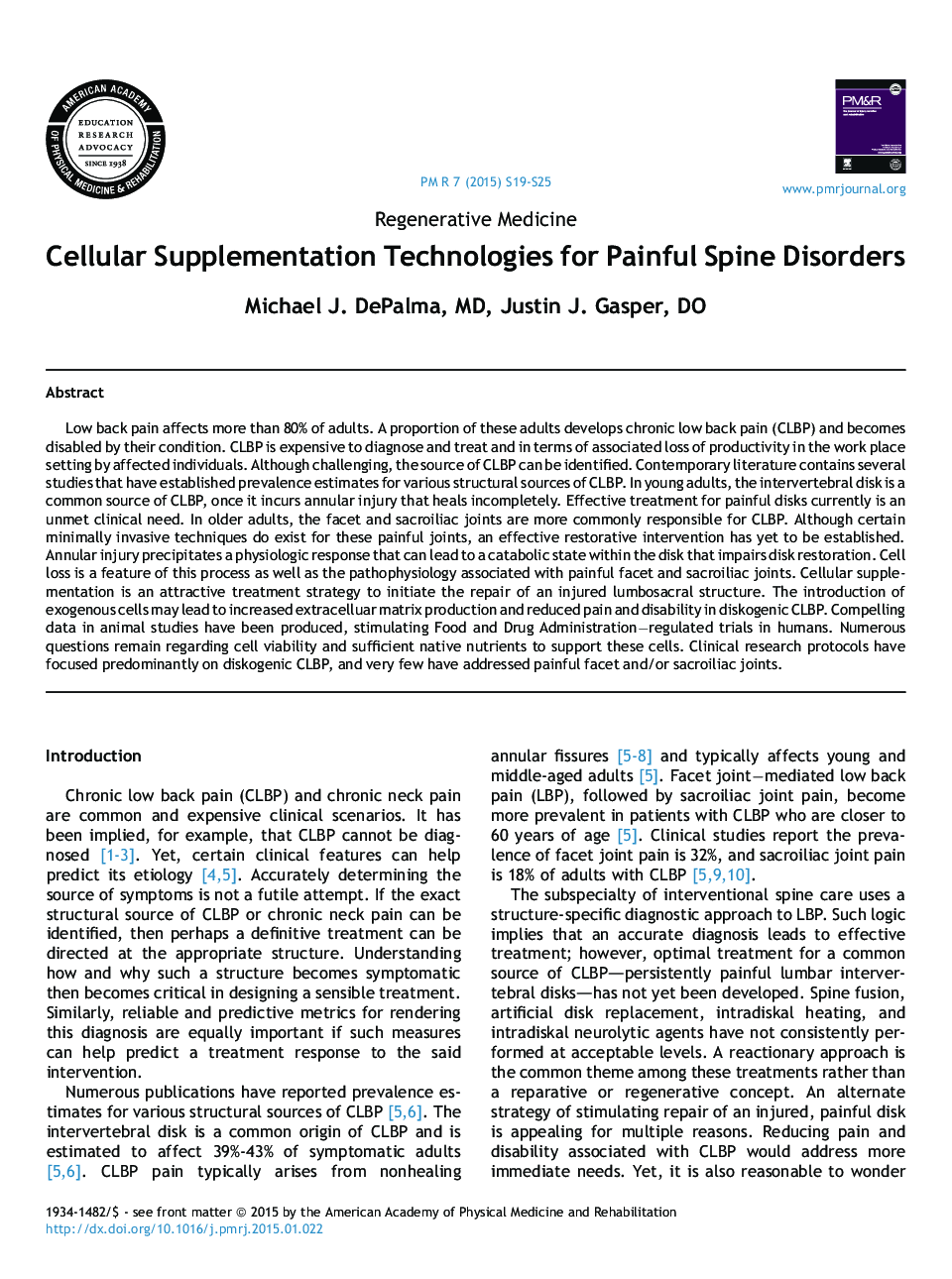| Article ID | Journal | Published Year | Pages | File Type |
|---|---|---|---|---|
| 5875960 | PM&R | 2015 | 7 Pages |
Low back pain affects more than 80% of adults. A proportion of these adults develops chronic low back pain (CLBP) and becomes disabled by their condition. CLBP is expensive to diagnose and treat and in terms of associated loss of productivity in the work place setting by affected individuals. Although challenging, the source of CLBP can be identified. Contemporary literature contains several studies that have established prevalence estimates for various structural sources of CLBP. In young adults, the intervertebral disk is a common source of CLBP, once it incurs annular injury that heals incompletely. Effective treatment for painful disks currently is an unmet clinical need. In older adults, the facet and sacroiliac joints are more commonly responsible for CLBP. Although certain minimally invasive techniques do exist for these painful joints, an effective restorative intervention has yet to be established. Annular injury precipitates a physiologic response that can lead to a catabolic state within the disk that impairs disk restoration. Cell loss is a feature of this process as well as the pathophysiology associated with painful facet and sacroiliac joints. Cellular supplementation is an attractive treatment strategy to initiate the repair of an injured lumbosacral structure. The introduction of exogenous cells may lead to increased extracelluar matrix production and reduced pain and disability in diskogenic CLBP. Compelling data in animal studies have been produced, stimulating Food and Drug Administrationâregulated trials in humans. Numerous questions remain regarding cell viability and sufficient native nutrients to support these cells. Clinical research protocols have focused predominantly on diskogenic CLBP, and very few have addressed painful facet and/or sacroiliac joints.
